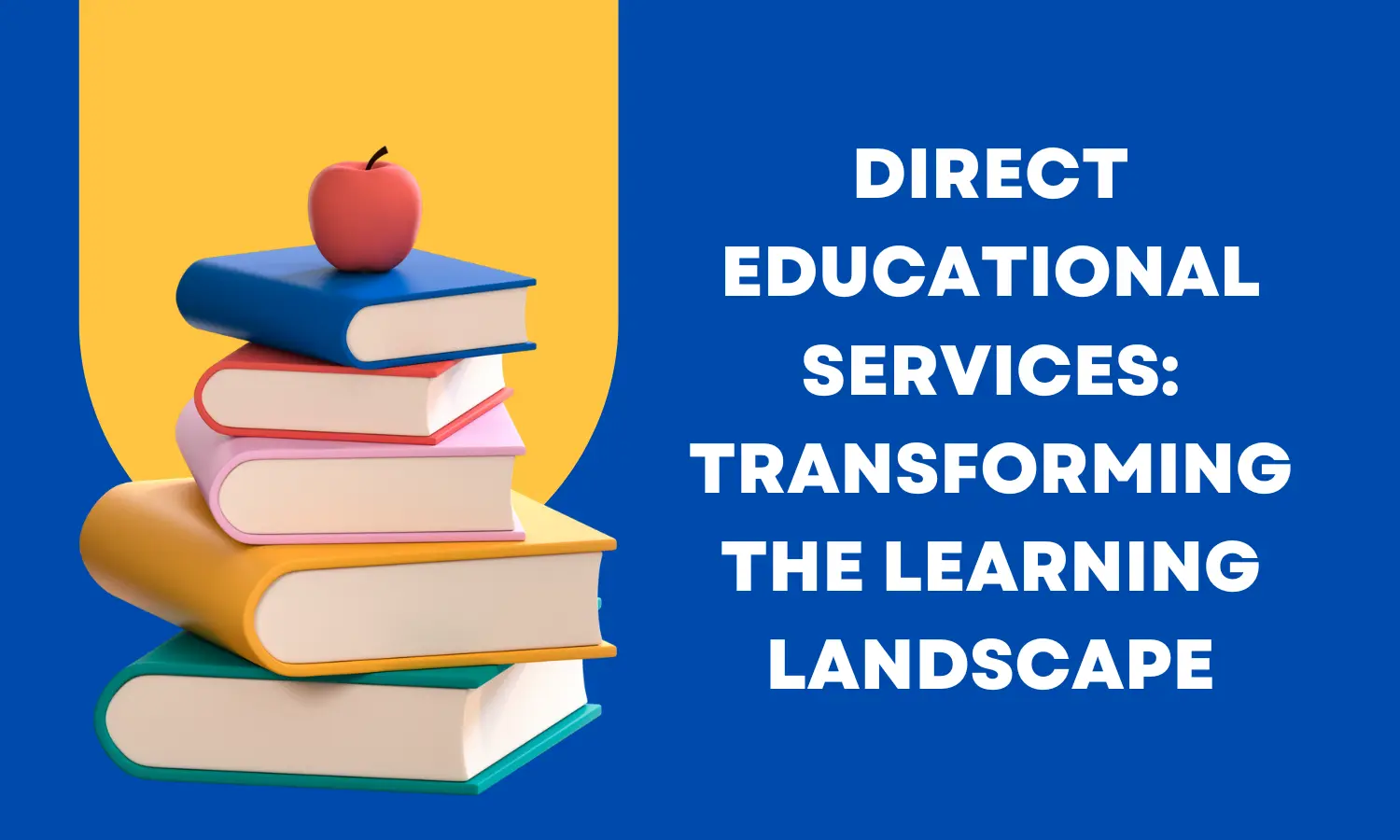Introduction
In the recent past there have been changes in the provision of Direct Educational Services with DES taking central stage in this area. This means that DES is capable of delivering one Kind of education to suit a particular set of students. This exhaustive article discusses what it is, what advantages does it have, what kinds there are, and what may be expected in the future. The topic of discussion of this paper is called Direct Educational Services.
Definition and Purpose
Direct Educational Services involve using direct, instruction-based delivery mode of learning with students outside the classroom constraints. These service delivery models focus on diverse delivery models, accommodation and personalization. It is also important to point out various types of direct educational services.
1. Online Tutoring
- Independent tutorials with teachers in an online mode.
- Video support and real time feedback.
2. Curriculum Development
- Adaptive content development for education.
- Some criteria do relate to the learning objectives, such as:
3. Assessment and Evaluation
- Standardized tests, evaluations of students and athletes.
- Scientific analysis for change enhancement.
4. Special Needs Support
- Special support for learning disabled students.
- ‘Access for all’ framework of leaning environments.
5. Language Instruction Language learning programs.
- Examples of such exposures include; Cultural excursions.
Advantages Of Direct Educational Services
1. Personalized Learning Experiences
- Different style and rhythm in learning between students.
- Faculty satisfaction in interaction with students: The communication gap has been shortened because improved tutors and students’ relations mean higher motivation.
2. Flexibility and Accessibility
- It is mobile and available anytime, and from any place.
- Self-paced learning enables the different schedules people have.
3. Specialist Teaching and Tutoring
- Expert tutors offer specific direction when an individual has to focus on his or her area of interest.
- Feedback that is positive encourages development.
4. Improved Academic Performance
- Sustainable learning produces better results compared to plain ordinary learning.
- Measurements are used because they are informed by data.
5. Increased Student Satisfaction
- In this way: Personalised attention increases confidence.
- It relieves pressure to work within a certain timeframe due to the uncertainty of the situation.
The Impact of Direct Educational Services
1. Expanding Accessibility
- Education transcends geographical boundaries in children’s homes and hard to reach suer groups.
- Proper treatment of students with disabilities.
2. Fostering Student Autonomy
- It therefore means that if the learners are to self-direct then they ought to be responsible or independent.
- Skills of decision-making.
3. Improving Teacher Performance
- Instructor-specific assistance.
- Career and staff development schemes.
Challenges and Limitations
1. Technical Barriers
- Internet connection poses a problem in the course of acquiring the information.
- They experience compatibility of the business’s various platforms.
2. Resource Constraints
- To some extent, there is a scarcity of professional trainers.
- Expenses are also high thus limiting the access to them.
3. Quality Control and Accountability
- Instructor’s credentials.
- Supervising the efficiency of the services delivered by an organization.
Future Directions for Direct Educational Services
1. Integration with Emerging Technologies
- Mobile applications with artificial intelligence.
- Application of virtual and augmented reality improvements.
2. Collaborative Partnerships
- Inter-institutional cooperation and collaboration enlarges resources.
- Industry collaboration offers a great deal of real-life experience.
3. Continuous Evaluation and Improvement
- Therefore, the assessment guarantees effectiveness.
- Feedback-driven refinement.
Best Practices for Implementing Direct Educational Services
1. Needs Assessment
- Studying the needs of students.
- Gentleman customized correspondingly.
2. Instructor Training
- Professional development opportunities Competing approaches to managing conflict.
- Developing and sharpening practice based teaching competencies.
3. Technology Infrastructure
- Dependable connectivity to Internet available 24/7 To do this the following computer requirement should be met depending on the number of students that will be accepted into the program:
- User-friendly platforms
Conclusion
Primary clienteles have enhanced educational delivery by providing tailored, flexible and convenient leaning solutions through Direct Educational Services. Still there remain such problems and it is precisely due to these that one can outline the advantages of DES. To pursuing the notion of creativity, partnership, and excellence seeking DES will keep on constructing the future of education.
Stay connected for the latest news and updates on Huts Blog
